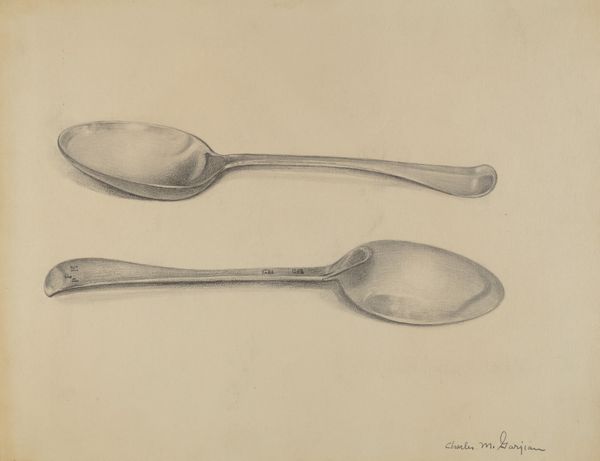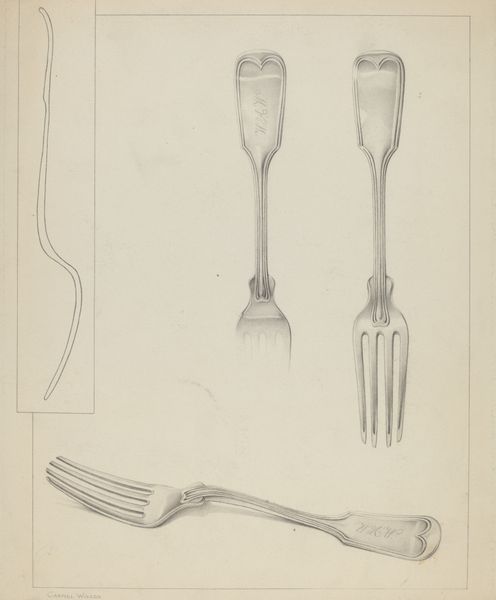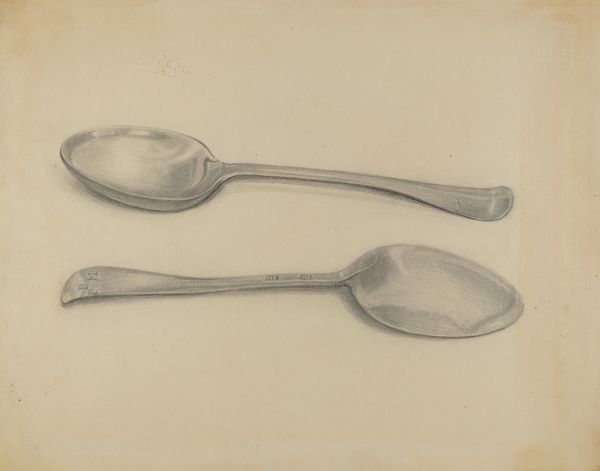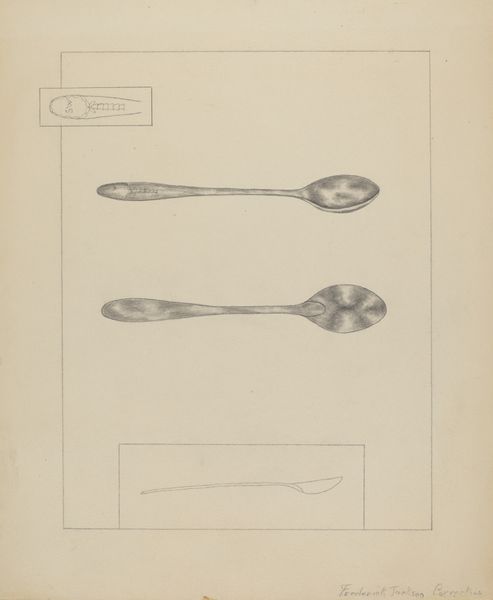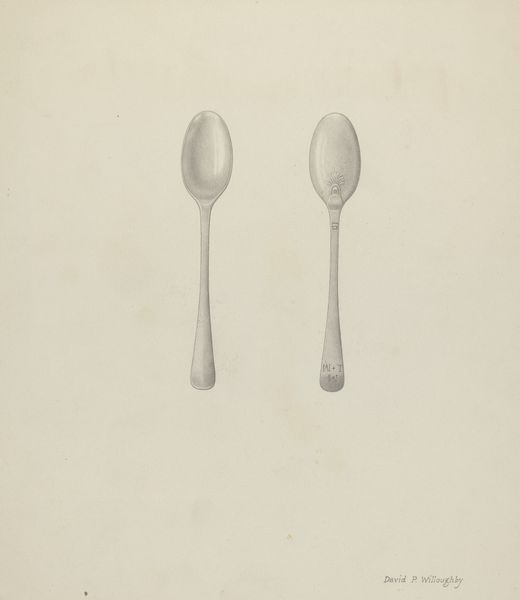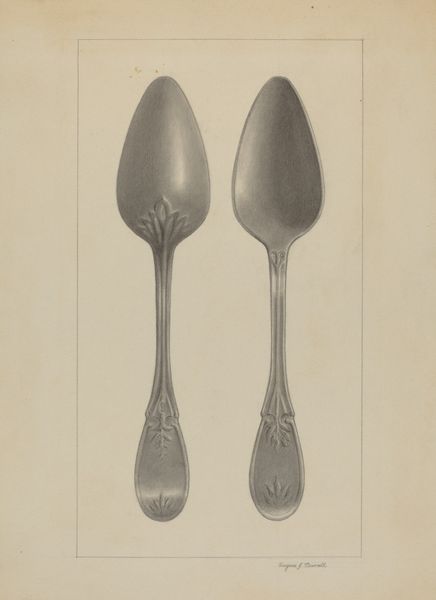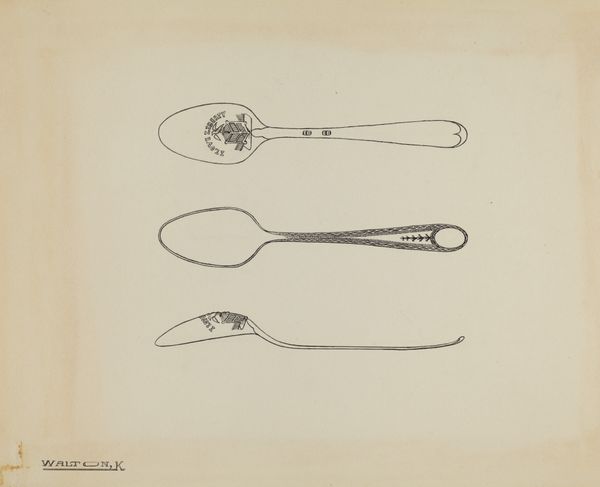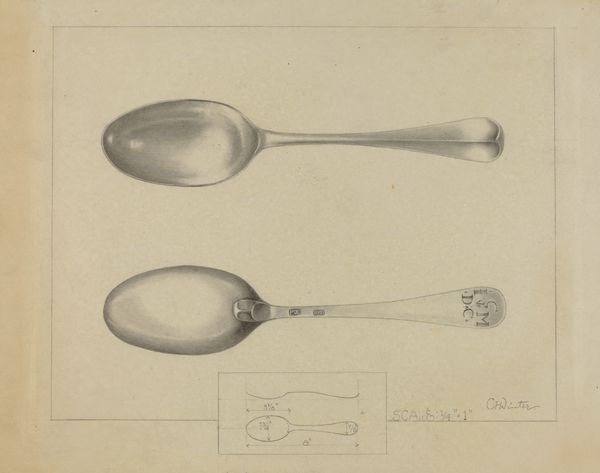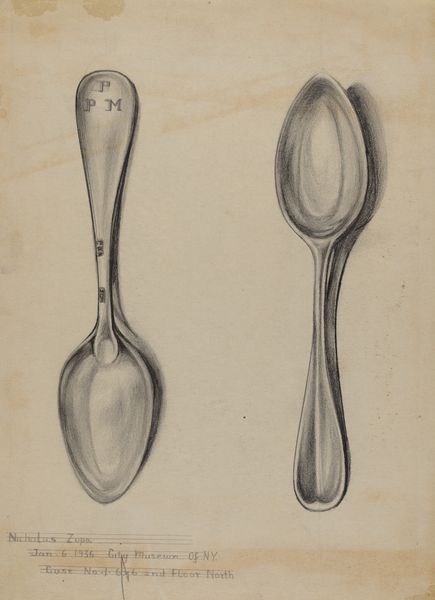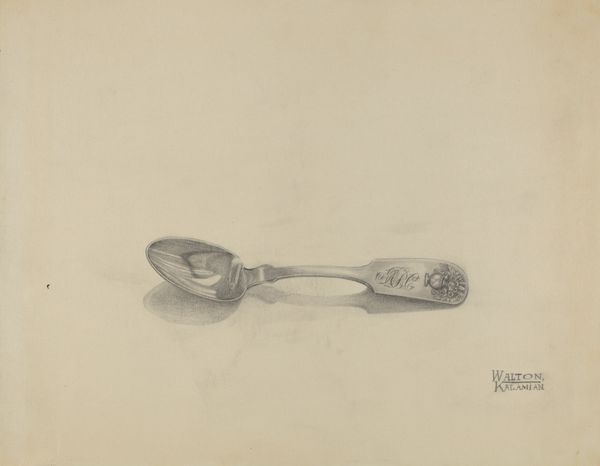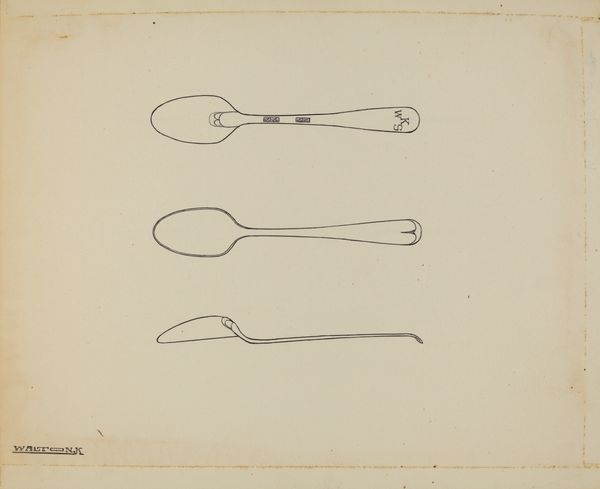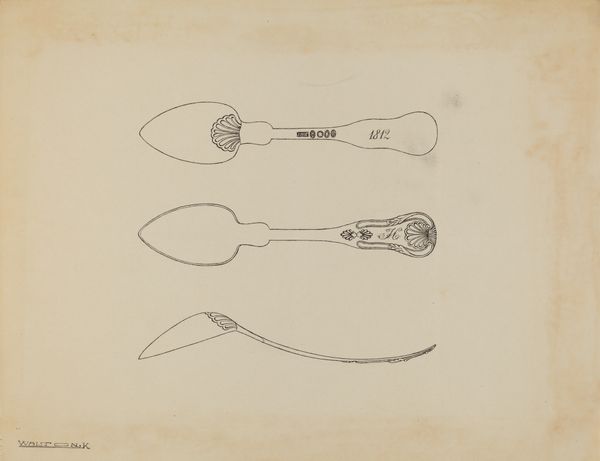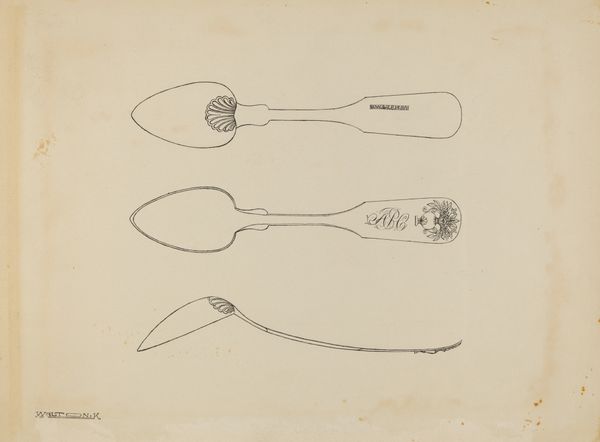
drawing, pencil
#
pencil drawn
#
drawing
#
pencil drawing
#
pencil
#
realism
Dimensions: overall: 12.6 x 16.4 cm (4 15/16 x 6 7/16 in.) Original IAD Object: 6 3/4" long; 5/8" wide
Copyright: National Gallery of Art: CC0 1.0
Curator: Welcome! We’re looking at Charlotte Winter’s pencil drawing, "Silver Fork," created around 1936. Two nearly identical forks rest horizontally on the page, rendered with precise detail. What’s your immediate impression? Editor: Austerity. There’s a stillness, an almost unsettling lack of ornamentation beyond the functional. It’s not just the silverware, but the medium itself. A pencil drawing of such an ordinary object conveys something stark. Curator: Precisely! Winter’s technical skill shines. Notice the subtle gradations of tone, creating depth and reflecting light on the metallic surfaces. She transforms a mundane utensil into an object of studied observation. The realism elevates its formal presence. Editor: Yet, how does this realism function within its historical context? The 1930s were a period of profound economic depression. This seemingly simple depiction of silverware, likely belonging to a more privileged class, subtly raises questions about access, resources, and societal inequalities during that time. The fork itself is an instrument of division, between those who have and those who do not. Curator: An interesting perspective. I’m drawn to how the repetitive form of the forks establishes a sense of balance and harmony within the composition. It is not strictly representational; the artist's eye turns utilitarian design into aesthetic form. Editor: And does that harmonious composition serve to mask, or perhaps soften, the realities of the era? Food, or the tools with which to consume it, was certainly a fraught topic in the Depression era. Curator: Perhaps. We can appreciate both its artistic merits and consider those complex layers of meaning. Look closely, and you will notice a set of monograms carefully represented in pencil on the fork handles. Editor: Right. That could further contextualize the image if we could ascertain to whom those forks belonged and under what circumstances Winter was making this drawing. It personalizes the scene as it highlights the role of design and access in society. Curator: Winter's 'Silver Fork' serves as a captivating example of realist drawing technique from this period. Editor: A provocative window, offering space to interrogate everyday class-based dynamics surrounding scarcity, design, and consumption during a time of great precarity.
Comments
No comments
Be the first to comment and join the conversation on the ultimate creative platform.
